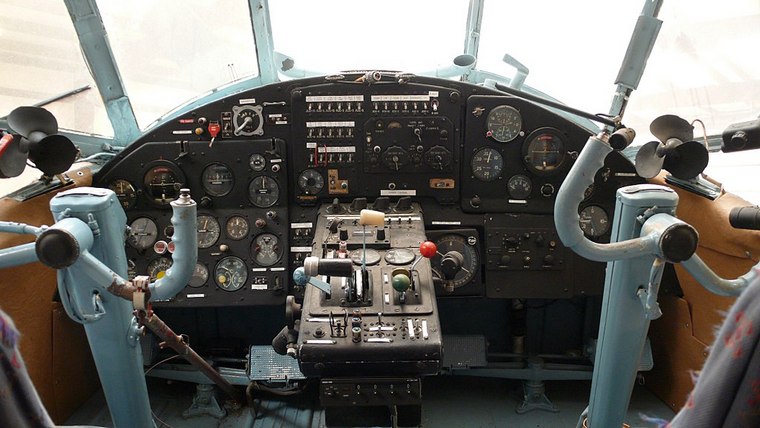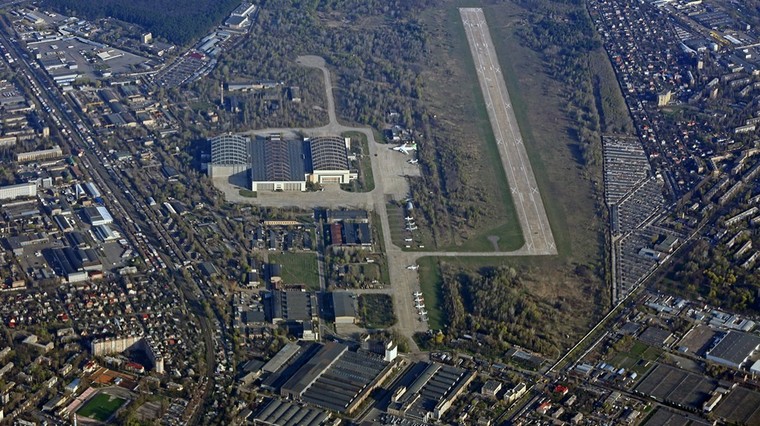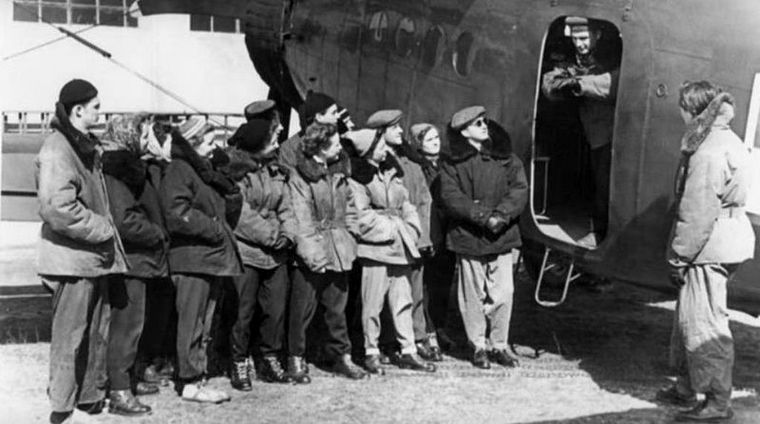
















Antonov Design Bureau - The Big, the Heavy and the Bold. Part 1
By Amith Babu


The Antonov An-2, the plane that Antonov made and the plane that made Antonov. Photo commons.wikimedia.org
Two months, later on July 31st 1946, the Soviet Union approved a proposal for the need of an agricultural aircraft and Antonov's utility plane became a multi-purpose one. On the 31st of August 1947, the first prototype named SKh-1 made its maiden flight and immediately the strong points of the aircraft became clear; it was very easy to fly, could perform manoeuvres considered too dangerous for other aircraft and could be manoeuvred at speeds as low as 27kts (50km/h), a feature which gave the plane the ability to even fly backwards with a strong enough headwind.

An AN2 Cockpit. Photo commons.wikimedia.org
The An-2 was powered by a 1010 Horsepower Shvetsov ASh-62IR 9-cylinder supercharged radial piston engine with a 4-bladed constant speed propellor. It was capable of carrying 12 passengers or 2140kg of payload, with a cruise speed of 100 kts (190 km/h), a maximum speed of 139 kts (258km/h) and a range of 845 km.


An An-2R (a Polish agricultural variant capable of carrying 1,300 kg of liquid or powdered chemicals) spraying crops. Credits: Janusz Babiejczuk, Jerzy Grzegorzewski Warsaw. Wikipedia Commons
The plane had left a good impression with the then leader of the USSR, Joseph Stalin. There were however some major concerns as to where the An-2 would be manufactured since factories in Novosibirsk were overwhelmed and didn't have the time for an agricultural plane. After influence from Joseph Stalin, it was decided to produce the plane in Ukraine, which was recovering from WW2 and wanted its own aviation industry. On the 23rd of August 1948, the USSR Council of Ministers issued series production to begin in Kyiv, Ukraine at State Plant No 473 located at Sviatoshyn Airfield,11 km northwest of Kyiv's city centre. Plant No 473 has been in operation since the 1920s and during the second world war, assembled and overhauled fighters such as the Yak-3 and Yak-9.

Sviatoshyn Airfield in 2015, some Antonov aircraft can be seen parked on the aprons. Source: Oleg Volkov
However, production in Kyiv posed a few problems, namely the plant was outdated and was 3000km from OKB-153, which could cause problems in quality and production and hence the entire company was relocated to Kyiv. This was not only beneficial for the plant and Antonov, but also the Ukrainian authorities. From 1947, the plant had been producing the Mi-1 the first Soviet helicopter, designed by Mil Moscow Helicopter Plant and its production had to be moved elsewhere in 1948 to make room for Antonov.

Training of the Polish national parachute team on an Antonov An-2TD (paratrooper version with 12 seats, static line attachment cables and drop signalling lights) Credits: Wikipedia Commons / Parachute section of the Gliwice Aeroclub
Soon afterwards production of the An-2 began, but was slow as the plant was undergoing an extensive and complicated modernisation and renovation program which would only be completed in 1952. Between that period of time, Antonov had worked on further modifications of the An-2, which included transport/passenger (An-2TP), high altitude metrological research (An-2ZATK) and even close-range night reconnaissance and artillery observation (An-2F) variants as well as a new aircraft, a twin-turboprop transport, but more on that later.
PLEASE GO TO
www.youtube.com/channel/UCCuRVZAGodT6sztTeXBGeMw
and subscribe to our YouTube channel

 |
 |
 Copyright © 2024 Pilot's Post PTY Ltd
The information, views and opinions by the authors contributing to Pilotís Post are not necessarily those of the editor or other writers at Pilotís Post.
Copyright © 2024 Pilot's Post PTY Ltd
The information, views and opinions by the authors contributing to Pilotís Post are not necessarily those of the editor or other writers at Pilotís Post.